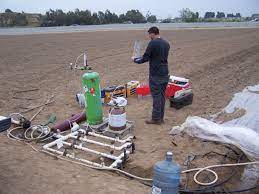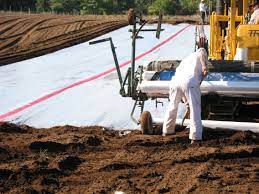Fumigation is the use of poisonous gases to kill pests in an enclosed area. It is the most effective way to reach pests in their most remote hiding places. Fumigants are broad-spectrum pesticides, killing all species of arthropods and rodents that are likely to be found in a building.
To be effective, fumigants must reach target pests as gases entering the insect’s body through the body wall or respiratory system.
Fumigants penetrate into many areas of a building not accessible by sprays or dusts, even penetrating into the burrows of wood-infesting insects, as well as into the centre of tightly packed commodities, such as tobacco in hogsheads, bales, cases or grain in large silos or storage bins.
A fumigant gas generally does not leave unsightly, odorous, or hazardous residues.
Types of Fumigation
Fumigants are Restricted-Use pesticides because of their high acute toxicity, primarily by inhalation. They can act as respiratory poisons, anesthetics or narcotics or enzyme poisons.
The two types of fumigation commonly used are space fumigation and soil fumigation.

Space fumigation
The term “space fumigation” is convenient for the designation of a wide range of treatments in enclosed spaces, which either contain infested materials or residual insect populations.
Read Also : Management Practices Affecting the Mobility of Pesticides in Soil
Space fumigation includes empty building fumigation, farm grain storage fumigation, rodent burrow fumigation, vehicle fumigation, tarpaulin fumigation, etc.
Soil fumigation
Soil fumigation involves the use of pesticides that, when applied to soil, form a gas to control pests that live in the soil and can disrupt plant growth and crop production.
Soil fumigants are used on many high value crops and provide benefits to growers in controlling a wide range of pests including nematodes, fungi, bacteria, insects and weeds.
Soil fumigation can be carried out on field, nursery, greenhouse and seed or transplant bed soils. It can also be achieved through non-tarp fumigation by injection.

